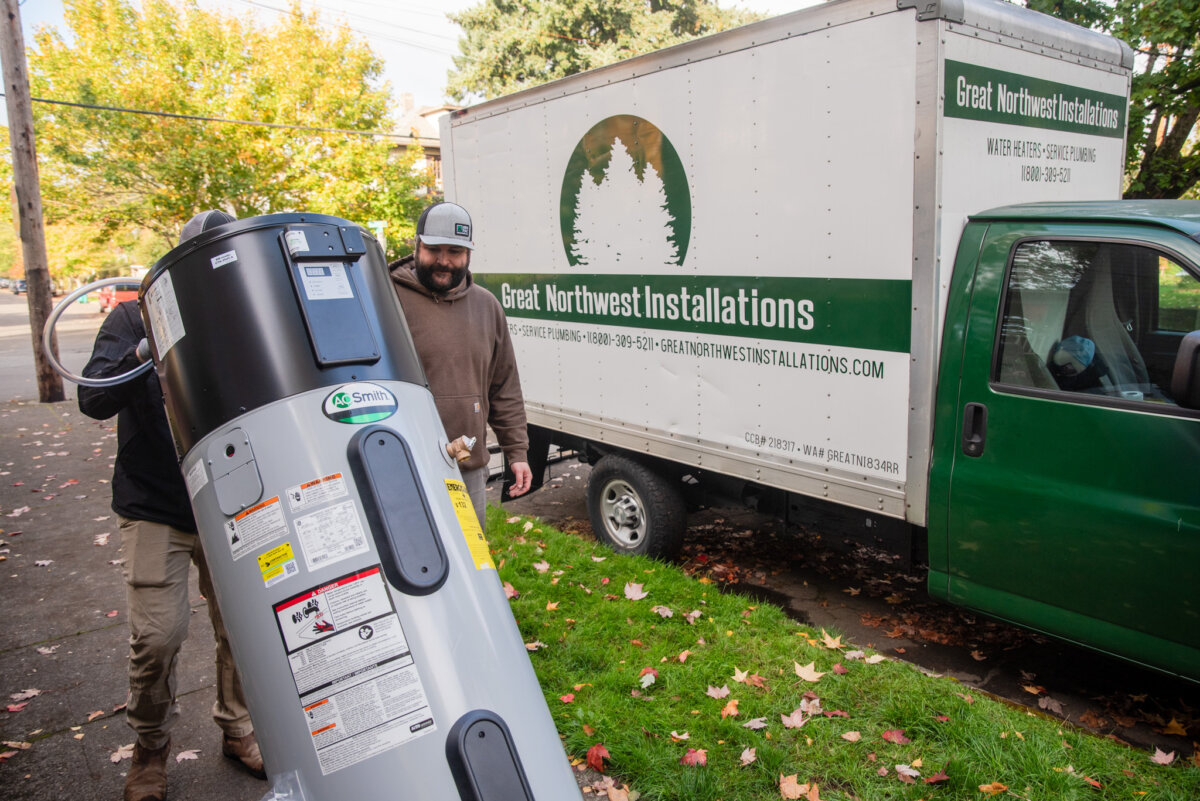
We recently had an opportunity to poll dozens of plumbers about heat pump water heaters (HPWHs) to find out what they liked, what they would change and what the ideal installation scenario looked like. While opinions and experience levels varied widely, there was no question about HPWH’s significant energy- and money-saving potential for their customers. However, noticed that some interesting misconceptions kept coming up — so we thought we’d set the record straight.
Reality: HPWHs use established, reliable technology that has been around for decades. Even if many consumers aren’t familiar with the term “heat pump” or “heat pump water heater,” they shouldn’t worry: it’s the same technology that refrigerators use to keep foods cold, except in reverse. Another sign of their reliability is that most HPWHs come with a 10-year warranty, which is longer than a standard water heater.
Reality: While the compressor on a HPWH produces more noise than a conventional water heater, it’s comparable to the hum of a refrigerator. (And, like with a refrigerator, the compressor only runs intermittently.) Proper installation and location selection in the home can minimize any perceived noise, making it a non-issue for most homeowners.
Reality: Installing HPWHs does require some additional considerations, like airflow for the fan and a condensate line. However, once these needs are understood, installation is straightforward, not much different from traditional models.
Reality: The cooler air expelled by HPWHs is a minor byproduct and, with strategic placement, has minimal impact on home comfort. In fact, research from PNNL showed that HPWHs didn't have a measurable impact on homes' heating systems, so the small amount of cool air in the immediate vicinity of the HPWH is a small trade-off for the significant cost savings these units provide.
Reality: HPWHs function effectively in a range of temperatures — they also have backup electric elements for extremely cold conditions, ensuring hot water year-round while maintaining cost efficiency.
Reality: HPWHs often surpass traditional electric tanks in their ability to generate hot water. Adjustments like installing a mixing valve can further enhance their capacity, ensuring ample hot water for household needs.
Reality: The initial higher cost of a HPWH is quickly offset by significant savings. Most utilities offer cash rebates and new federal incentives, like a tax credit of up to $2,000, further reduce the price gap. Over time, the efficiency of HPWHs translates into considerable savings on utility bills, making them a smart financial choice for homeowners in the long run.
It’s no surprise that up-and-coming HPWHs aren’t as well understood as their established standard electric counterparts. But the truth is that the benefits of HPWHs are unparalleled in terms of savings and energy efficiency. By offering their customers a product that not only delivers on performance but also promises significant savings on utility bills, contractors have an opportunity to set themselves apart and provide superior value. It’s time to move beyond the common myths and recognize HPWHs for what they are: a smart investment for homeowners throughout the Northwest.